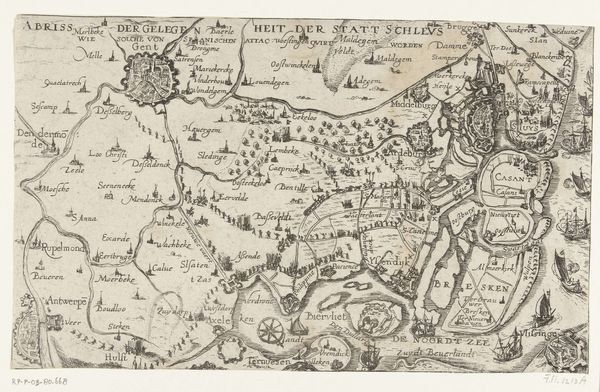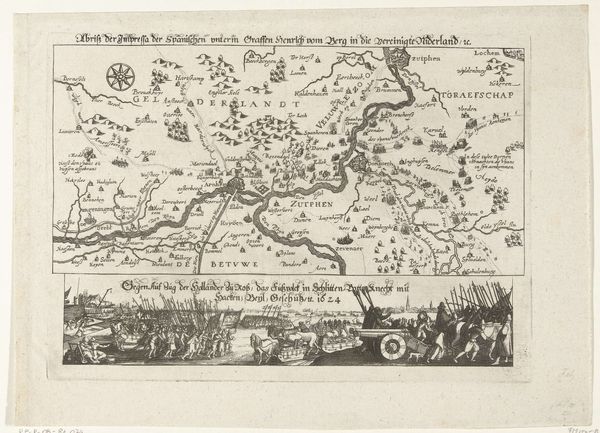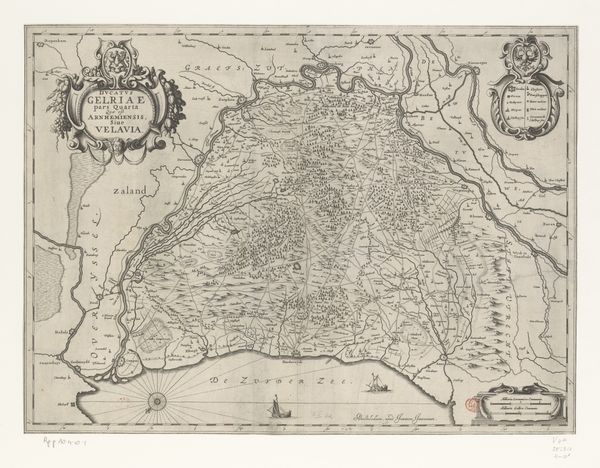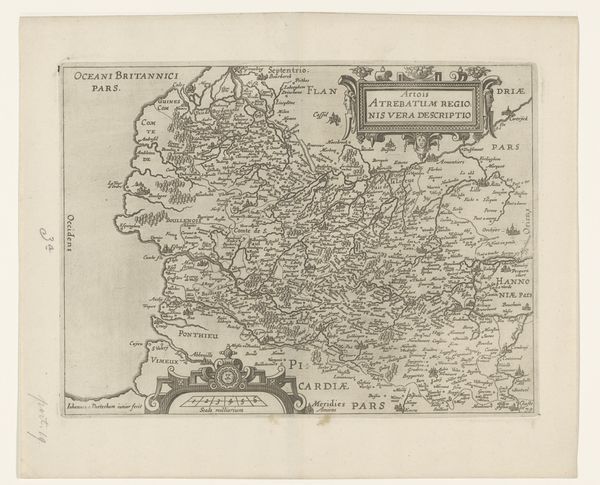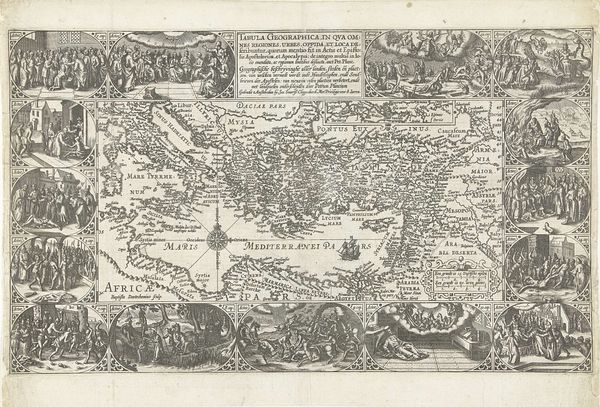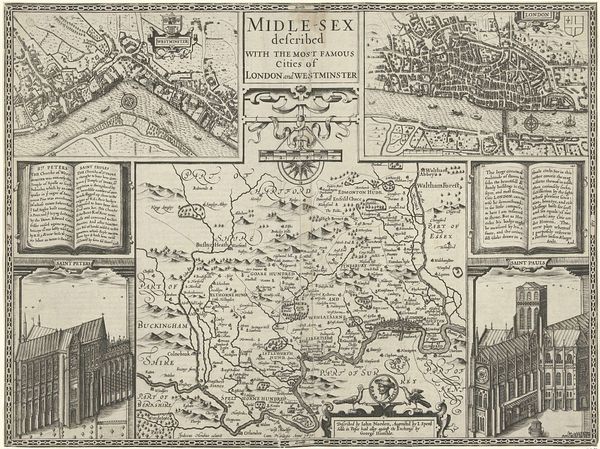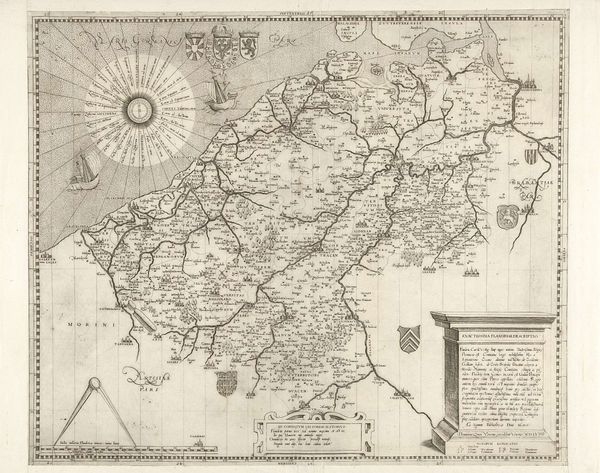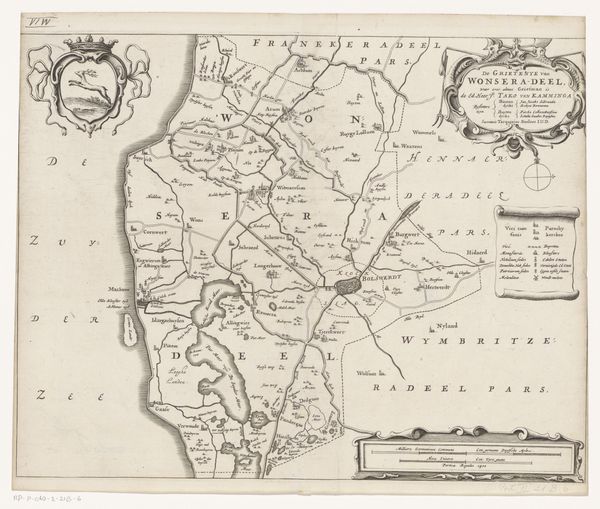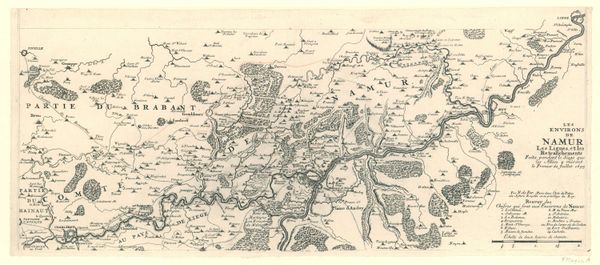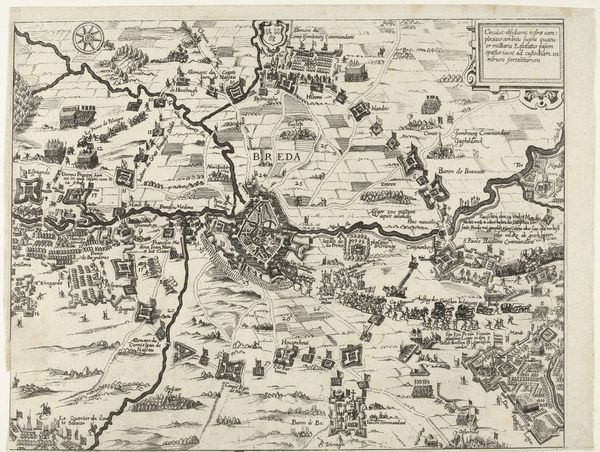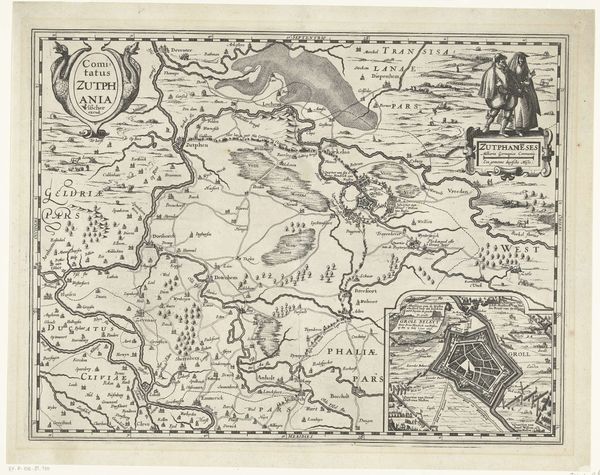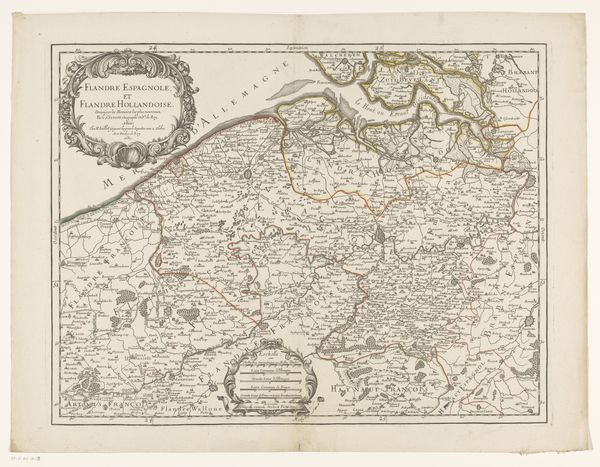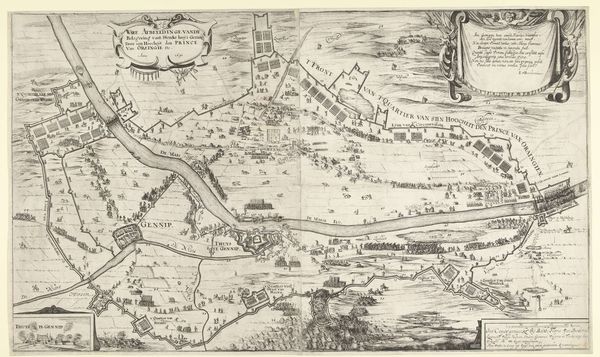
Dimensions: height 167 mm, width 342 mm
Copyright: Rijks Museum: Open Domain
Editor: Here we have "Cartouche met kaart van Crema," a print from 1579 by an anonymous artist. It's striking how the map is framed by these ornate cartouches; they almost seem to outweigh the geographical information itself. What catches your eye in this piece? Curator: Well, these cartouches aren't mere decoration; they are visual rhetoric. The figures represent idealized versions of masculine virtue and feminine beauty. These images have a cultural weight. What do you see? Editor: I suppose they're trying to convey something about the region. The male figure is armed, implying strength and defence, while the female might be suggesting fertility or abundance? Curator: Precisely! Think of maps during the Renaissance, less as objective representations and more as statements of power and cultural identity. What stories are these visual cues trying to tell us about Crema's desired self-image? Is it about protection and the bounty of the land? Editor: That's interesting. It shifts the focus from just the place to what they wanted people to *think* about the place. The very act of mapping becomes a form of propaganda almost, projecting a particular ideal. I had not thought of that! Curator: The strategic placement of these icons isn’t accidental. Each element serves to shape perception. The map exists in the context of a society that assigns significance to gendered virtues. Editor: So reading the imagery reveals a lot about the region’s aspirations and the values they were trying to project. Curator: Exactly. It invites us to look beyond the lines on the map and consider the broader cultural landscape of the time.
Comments
No comments
Be the first to comment and join the conversation on the ultimate creative platform.
